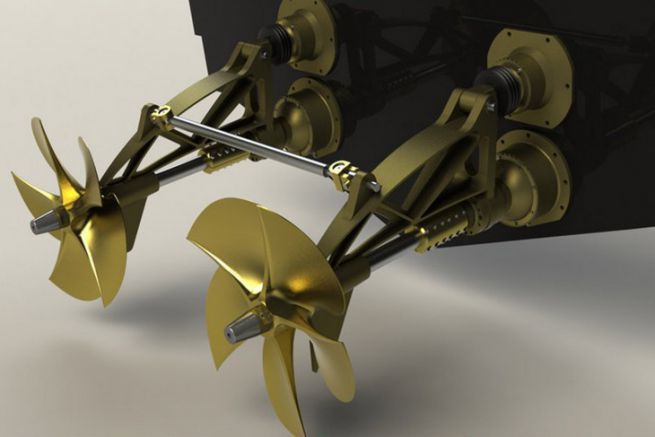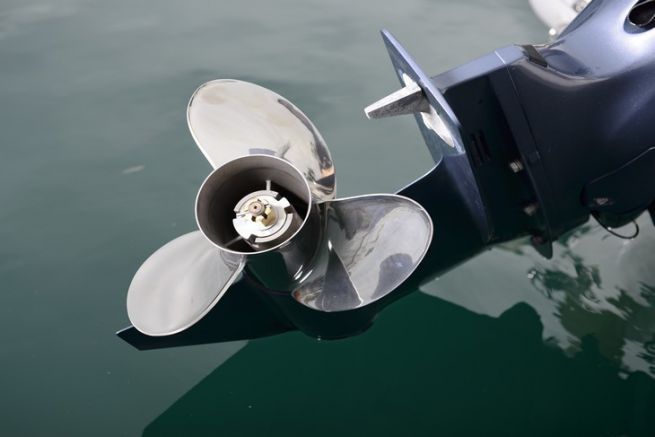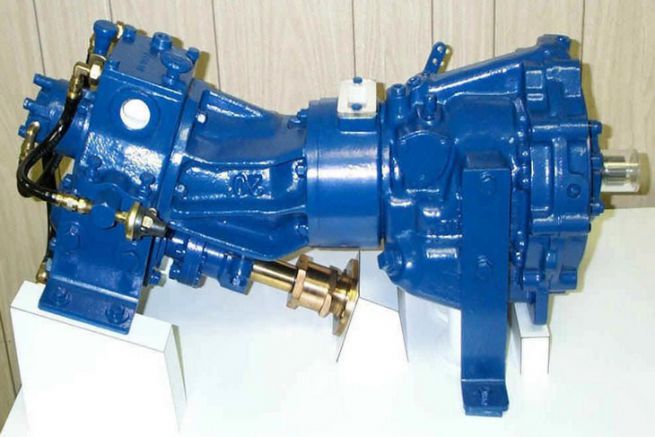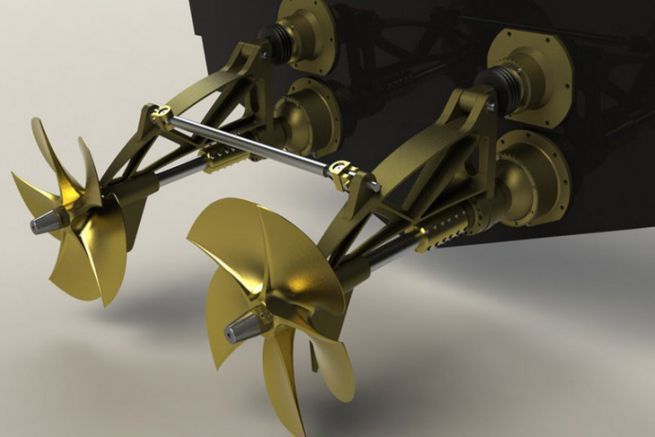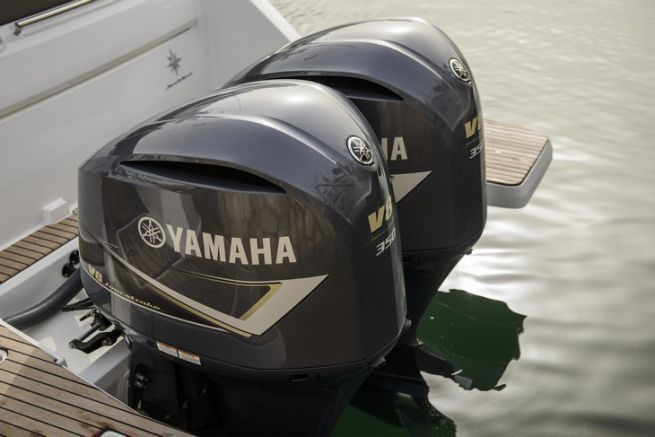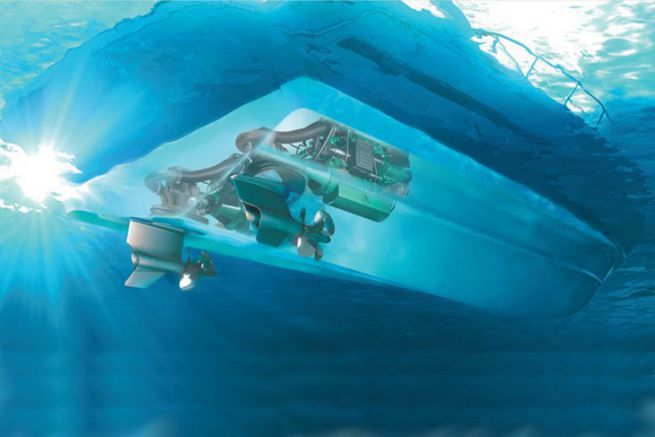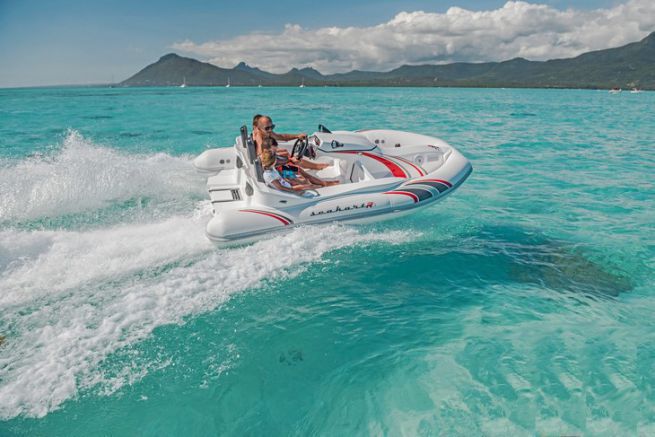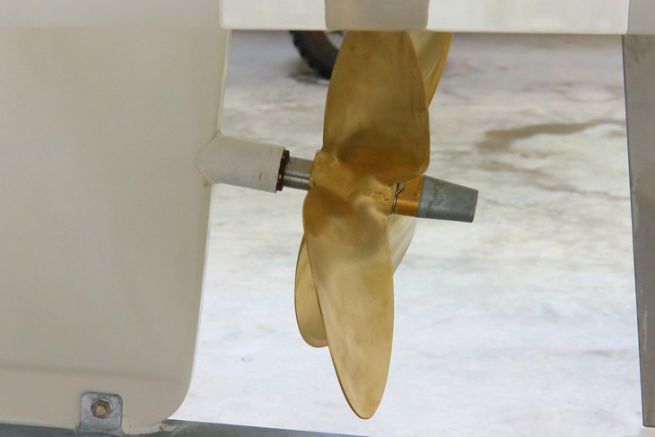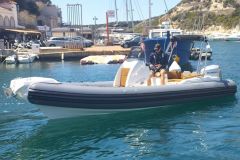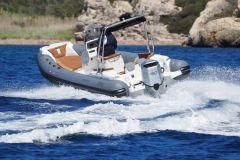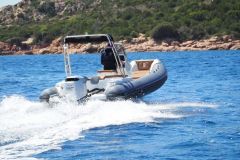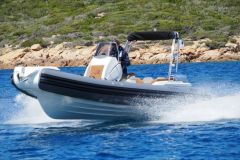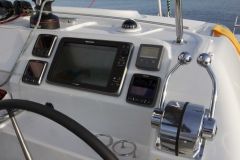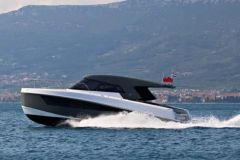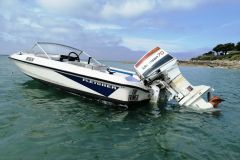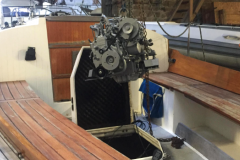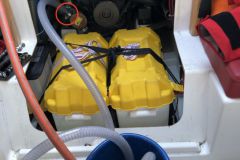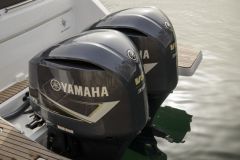Presentation of the surface propeller
The surface propeller is a propulsion with inboard motorization used mainly for very fast motor boats (offshore type). The axis of the propeller hub is located at the waterline offset far behind the transom.
The propeller blades are designed to operate in water and air.
The transmission shaft is in the axis of the engine, which allows a transmission almost in a straight line from the engine crankshaft to the propeller (there is just a cardan shaft). This almost direct transmission avoids line losses and all engine power is fully transmitted to the propeller.
To ensure steering, the shaft line is articulated at the transom. It rotates to choose the direction of the boat.
Boats using this propulsion system are easily recognizable with the large spray of water produced in their wake.
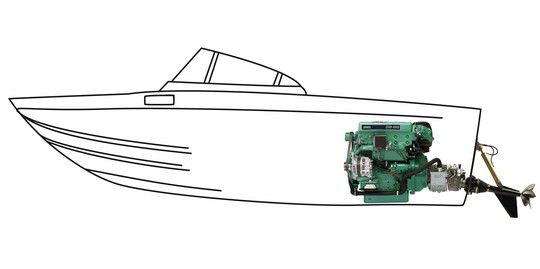
Advantages of the surface propeller
- The surface propeller is semi-submerged, thus reducing the cavitation effect and improving efficiency (15 to 30% higher efficiency than other more conventional drives).
- By turning very quickly at the surface of the water, it allows the boat to be very efficient
- It is suitable for very large engines (several thousand horses)
- It remains easy to maintain
Disadvantages of the system
- This type of propulsion remains very expensive and reserved for an elite who only think about performance.
- The boat remains poorly manoeuvrable at idle and in reverse.
- The large spray of water can be seen as another disadvantage
both filed for bankruptcy.


 /
/ 